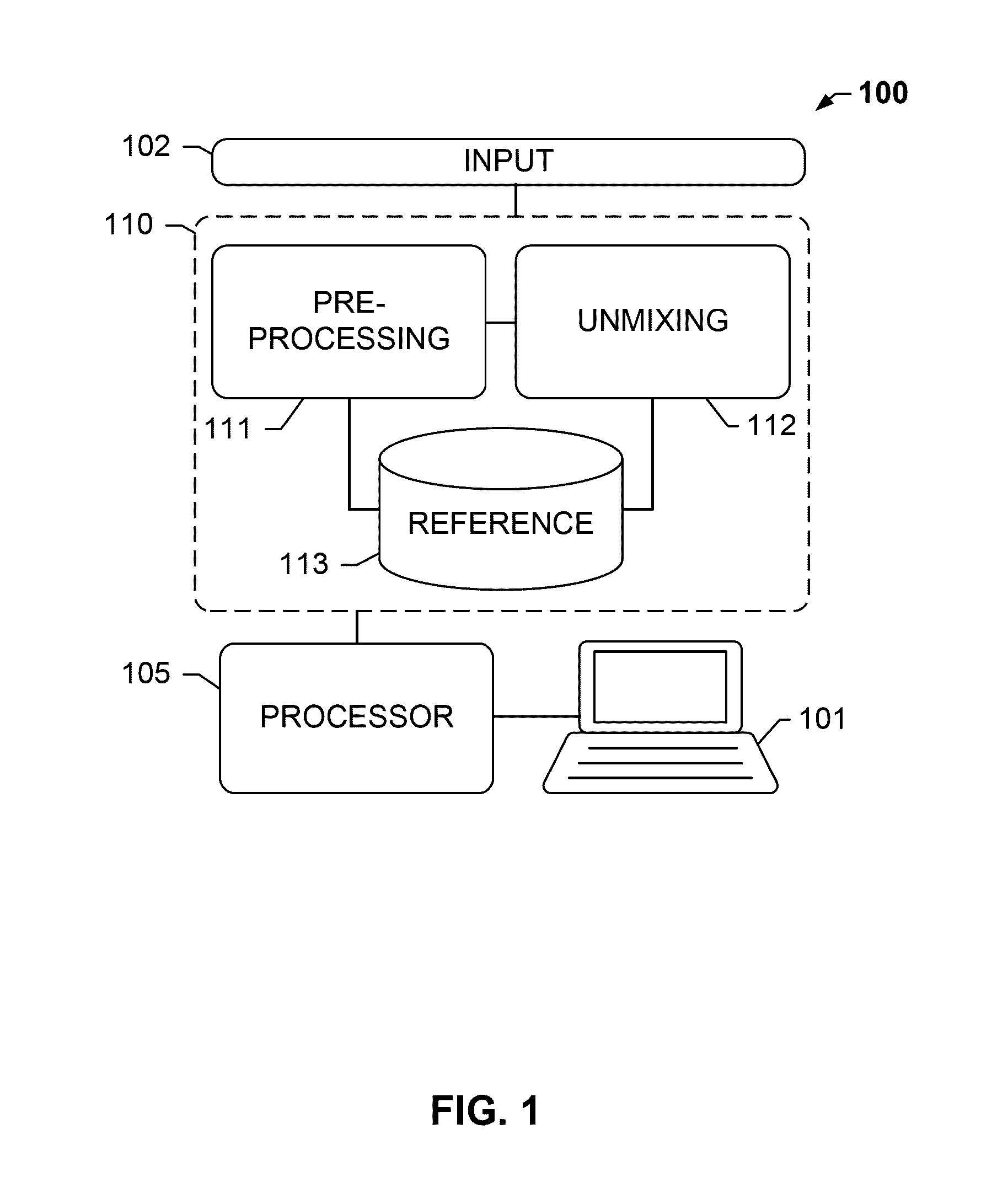Group sparsity model for image unmixing
a group sparsity model and image unmixing technology, applied in image enhancement, image analysis, instruments, etc., can solve the problem of spatial continuity loss in unmixed images, the limitation of the maximum number of stains that can be solved, and the limitation of the number of large stains. problem, to achieve the effect of reducing the model to sparse unmixing
- Summary
- Abstract
- Description
- Claims
- Application Information
AI Technical Summary
Benefits of technology
Problems solved by technology
Method used
Image
Examples
Embodiment Construction
[0025]Before elucidating the embodiments shown in the Figures, various embodiments of the present disclosure will first be described in general terms.
[0026]The present disclosure relates, inter alia, to an analysis system, e.g. to a tissue analysis system. The system may be suitable for analyzing biological specimen, for example, tissue provided on a slide.
[0027]The term “image data” as understood herein encompasses raw image data acquired from the biological tissue sample, such as by means of an optical sensor or sensor array, or pre-processed image data. In particular, the image data may comprise a pixel matrix.
[0028]The analysis system may comprise a color data storage module that stores color data, e.g. color data indicative of a color of the stains. Such color data is also referred to as “reference data”. The color data may be descriptive of a single frequency or a characteristic spectral profile of the stain. The color data storage module may store color data for each of a plu...
PUM
 Login to View More
Login to View More Abstract
Description
Claims
Application Information
 Login to View More
Login to View More - R&D
- Intellectual Property
- Life Sciences
- Materials
- Tech Scout
- Unparalleled Data Quality
- Higher Quality Content
- 60% Fewer Hallucinations
Browse by: Latest US Patents, China's latest patents, Technical Efficacy Thesaurus, Application Domain, Technology Topic, Popular Technical Reports.
© 2025 PatSnap. All rights reserved.Legal|Privacy policy|Modern Slavery Act Transparency Statement|Sitemap|About US| Contact US: help@patsnap.com



